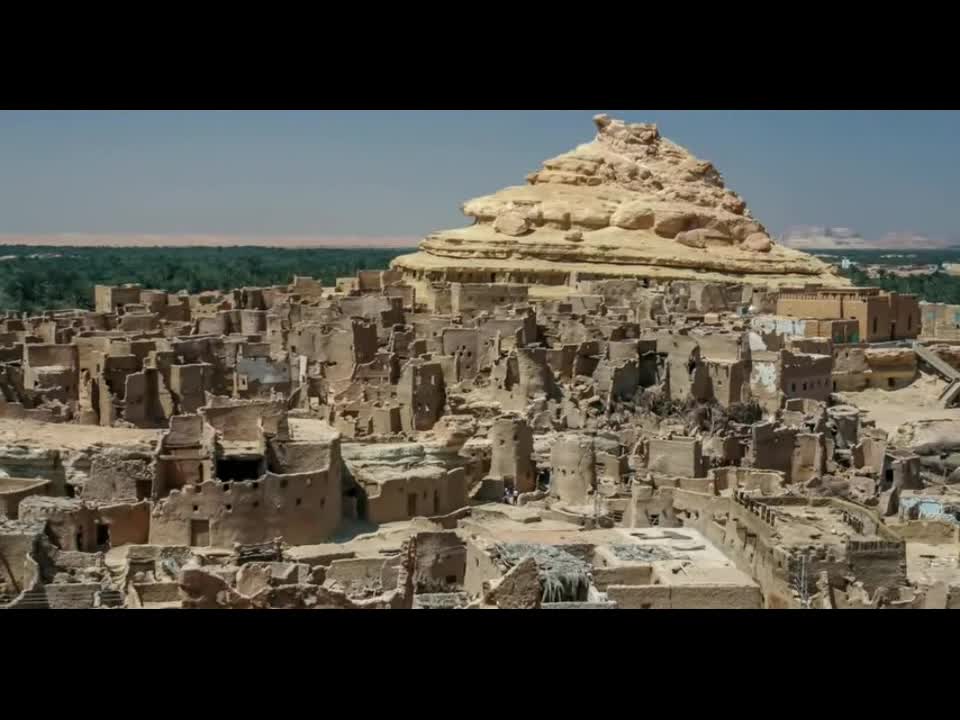Premium Only Content

Egyptian "Siwa a haven for those seeking comfort, treatment and recuperation
If you suffer from bone and back pain and want a therapeutic trip for recreation and rest, you can't miss a visit to Siwa Oasis, which is famous for its medical tourism, as its sands have natural elements that are suitable for alternative medicine purposes. Siwa is an Egyptian city and oasis in the Egyptian Western Desert, about 300 km from the Mediterranean coast to the southwest of Marsa Matrouh, and it belongs to the Matrouh Governorate administratively.
The medical tourism season, or "burial in the sand" as it is called in the Egyptian "Siwa" oasis, about 900 km from Cairo Governorate, begins from mid-July and continues until mid-September. The picturesque oasis opens its doors to the people of Egypt from the provinces and cities, in addition to visitors from Arab countries and around the world, for the medical tourism known as Siwa during this period of each year.Siwa is known for 7 places where sand baths are made for patients with rheumatism, rheumatoid and joint pain, etc., and they are all located in an area called "Jabal al-Dakrur", where sand baths are prepared and the visitor exits from his tent directly to the place to be buried with sand except for his face, in a process that takes about half An hour for 3 to 7 days each, depending on his health.The oasis includes a number of large lakes in the middle of these deserts, after cutting hundreds of miles in a barren desert you see bright white surfaces, and the most important lakes of Siwa (olive, Quresh and Khamisa, and Maragha) and the area of some of these lakes is about 15 km in length and some are deep, and are used Sometimes there are some small light boats for transportation, and the government is interested in raising some types of fish there, but many of them die because of the salinity.Sweet water reaches these lakes from springs and explosive eyes in the middle of these lakes or from drains of sweet water that you reach after watering the crops.Besides wells and springs, he discovered several archaeological sites such as the Temple of Amun, which witnesses the phenomenon of spring equinox twice every year, and the tombs of the Mountain of the Dead, and declared a natural reserve with an area of 7800 km, which includes several types of forms of animal and plant life
-
 2:44
2:44
KJRH
5 years agoFamily Seeking Treatment for Infant Son
18 -
 1:01
1:01
KNXV
5 years agoRep. Kirkpatrick of Arizona seeking treatment for alcoholism
11 -
 0:35
0:35
WochitNow
6 years agoWendy Williams Seeking Treatment, Living In Sober House
15 -
 0:48
0:48
WochitNow
6 years agoBritney Spears Gets Support From Loved Ones For Seeking Treatment
3 -
 1:51
1:51
The Western Journal
6 years ago#MeToo Reaches Top of Cali Democratic Party, Chairman on Leave, Seeking Treatment
9 -
 4:27
4:27
WMAR
5 years agoMelanoma Treatment
79 -
 2:12
2:12
WKBW
5 years agoCancer treatment shortage
47 -
 0:49
0:49
weddingsfolcloordance
5 years agoBizarre Egyptian Wedding Dances
401 -
 4:03
4:03
WMAR
6 years agoBPH Treatment
32 -
 2:25
2:25
KMTV
5 years agoNebraska Medicine Ebola treatment
43